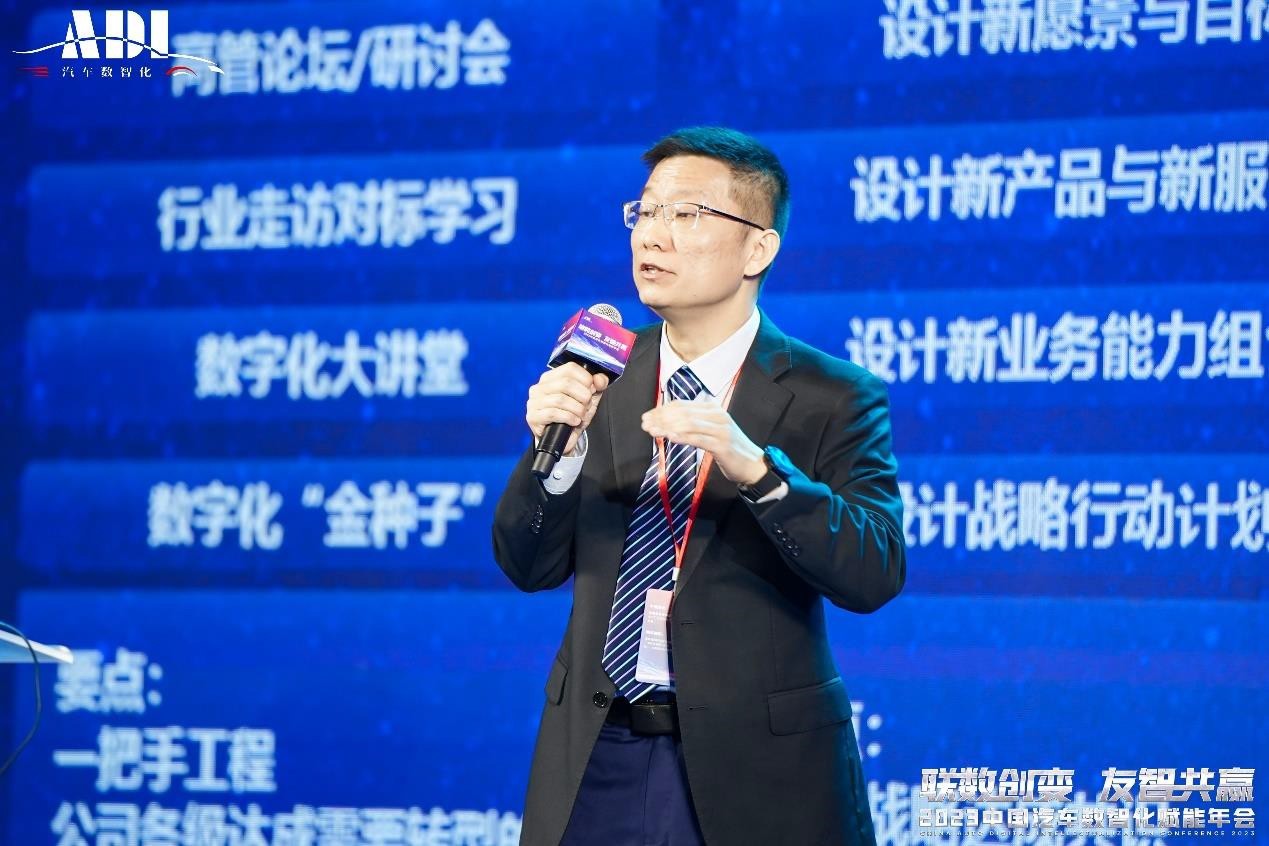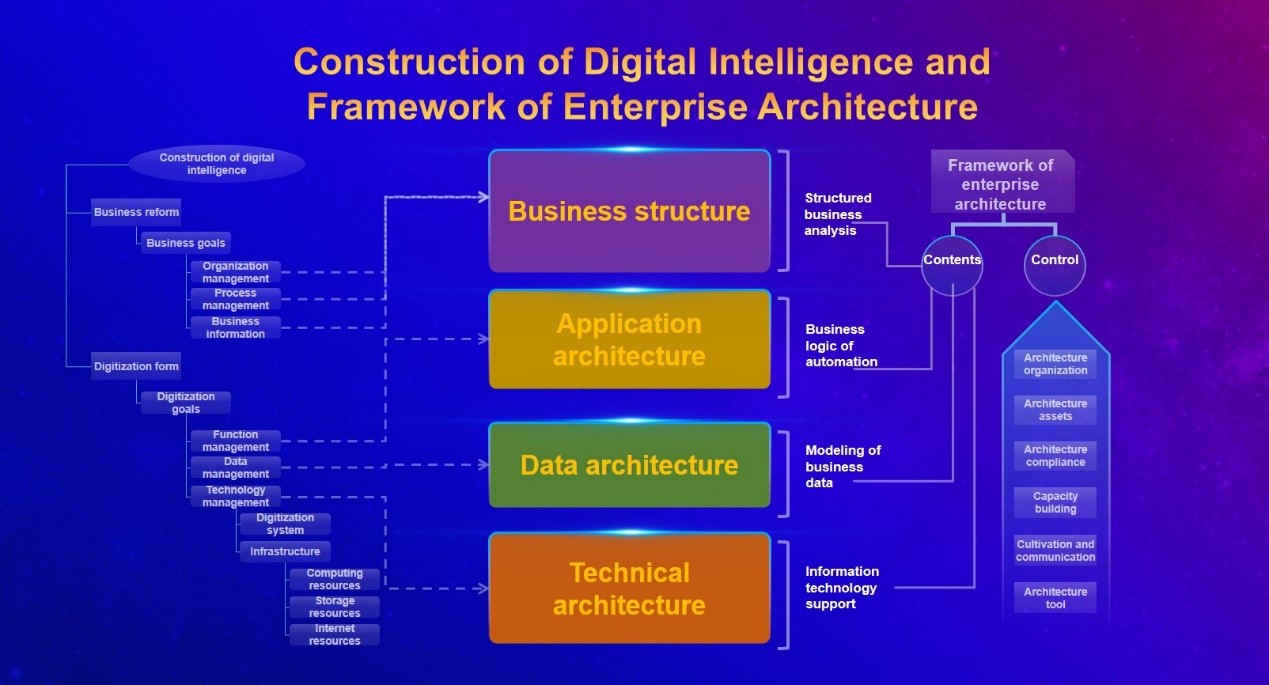On April 14, Hu Yongli, General Manager of Lan-you Technology, delivered a keynote speech titled “forging ahead in spite of difficulties to meet new challenges in automotive digital intellectualization” at the 2023 China Auto Digital Intellectualization Conference.

Hu analyzed the new situation, relationships, and opportunities in the development of the automotive industry, and pointed out that carmakers should focus on understanding users on the marketing side by connecting users through all touchpoints, providing full scenario products and services, meeting customized needs, and improving user experiences; on the production side, saving money for users by building intelligent factories to improve production efficiency and reduce production costs; and on the product side, empowering users by improving product competitiveness through rapid product iteration and OTA.
“For carmakers, marketing, manufacturing, products and other hot spots actually involve reconstructing their own capabilities around the user journey, the vehicle journey and the vehicle service matrix as reflected in business reform.” Hu thought that three core challenges were to be addressed in the transformation of automotive digital intellectualization.
The first is to build the “brain” for change, seize the top-level design, and avoid the “pilot trap” arising during transformation;
The second is to build the “skeleton” for change and fully plan the enterprise architecture supporting business change;
The third is to build the “bloodstream” for change and fully “awaken” vast data assets in a “dormant state”.
Avoiding the “pilot trap” of digital intellectualization through top-level design
According to research and analysis by multiple large agencies, over 80% of enterprises failed their expected goals of digital transformation. Most of them made successful trials on customer digital transformation at the beginning, but it did not work well when rolled out or even got mired. This situation is the “pilot trap” of digital intelligent transformation.
Hu explained the “pilot trap” of digital intellectualization through three common sayings – The first is “old wine in a new bottle”, which means that digital intellectualization is vigorously carried out on the surface, but in fact, it is traditional informatization that does not bring about actual business change. The second is “taking stopgap measures”, which means that most carmakers are enthusiastic about implementing projects with fast results and are easy to measure, but lack overall planning and strategic contribution. The third is “remaining on the surface”, which means only emphasizing IT application building while neglecting the importance of business, process and organizational change so that there is no practical effect.

“If the end point of business change is compared to a new continent, then, as the ‘captain’ driving that change, we need to support clients in solving the ‘why we do’, ‘how to do’ and ‘who will do’ problems they face,” explained Hu. In helping carmakers avoid the ‘pilot trap’, Lan-you Technology has gained top-level design methods and capabilities to make business change happen. In a digital intellectualization project of an engine enterprise, Lan-you Technology identified over 20 urgent issues to be addressed by sorting out all topics. Based on the objective situation of limited resources, Lan-you Technology helped the client design a “project priority 2+4 evaluation model” and selected the top 3 core topics, thereby fulfilling the business change goal of reducing product defect rate by 30% and reducing single unit operation costs by 3%.
Building “enterprise architecture for digital intellectualization” to make business change happen

What is enterprise architecture? Lan-you Technology thinks that it consists mainly of six parts: business architecture, application architecture, data architecture, technology architecture, architecture standards, and architecture governance.
In practical application, carmakers realize the “one chart” of reform through top-level design, and then implement it quickly with the help of enterprise architecture. Since business change has a one-to-many relationship with enterprise architecture, the variable of business change has to be finally put into practice through the constant of enterprise architecture.
Hu introduced the enterprise architecture built by Lan-you Technology for customers in the two fields of digital marketing and intelligent manufacturing.
Digital marketing is the fastest-changing business area in the entire automotive value chain, and carmakers design business architecture around the whole “user-centered” journey of vehicle use and purchase. Through years of business experience, Lan-you Technology has established a business-level architecture blueprint with four horizontal elements and five vertical ones, clearly including all marketing operations of a carmaker, and fully covering all online and offline business scenarios. At the same time, it supports marketing operations through 4 touch points, 11 systems, and 20 centers concurrently. Through the20 standardization centers, it fully supports the 5 major journeys and 282 sub-scenarios of marketing, reducing the development of repeated functions by approximately 70%, and improving business response speed by approximately 40%. Standardization centers support rapid business change and have particularly significant effects for multi-brand, multi-level and multi-pattern adjustments. In the manufacturing field, Lan-you Technology designs business and application architecture for the entire intelligent manufacturing process around the product journey based on over 20 years of practical experience, covering the product chain, value chain, and equipment asset chain, realizing the interconnection of five types of data, and establishing two full value management lines, which support the continual improvement of business processes and thus the realization of business goals. On the basis of business architecture, Lan-you Technology has created platform-based overall application architecture based on the standard architecture of the industrial internet. This architecture has been implemented by multiple carmakers successfully.
Hu said that manufacturing operation centers powered by standardization centers could help carmakers achieve comprehensive improvement in planning effectiveness, production efficiency, production cost control, logistics efficiency, quality defect control, and overall equipment efficiency.
Unleashing data value based on “business scenarios”
According to Hu, as early as April 2020, China listed data as the fifth-largest production factor for the first time. Untapped data is like stagnant water, whose value is not reflected. Only by flowing can data become an asset. Only if we work hard in digital operations by combing our years of experience in this area combined with scenarios of the customer and product journeys can we truly unleash data value to cash in.

By unleashing data value through “business scenarios”, Lan-you Technology has created a total of 148 digital application scenarios for the entire business chain of the automotive industry, from focusing on marketing, manufacturing and finance at the beginning, to extending the application scope to the entire value and business chains through a complete set of methods for turning data into assets and unleashing data value, and accumulating more scenarios in upstream and downstream fields like business planning, research and development, and automotive aftermarket.
Hu demonstrated the implementation effects of digital application scenarios in the three fields of manufacturing, marketing and IoV to support his viewpoint.
The first category comprises inventory control business scenarios in the manufacturing field. Through the dynamic prediction algorithm of part inventory data, Lan-you Technology helped an enterprise release billions of yuan of occupied funds within two to three years.
The second category comprises business scenarios of increasing revenue through active services in the marketing field. Lan-you Technology finally helped increase an enterprise’s annual insurance output value by hundreds of millions of yuan using a vehicle fault prediction algorithm.
The third category comprises business scenarios of recommended personalized IoV services. Lan-youTechnology works with third-party application and service ecology enterprises to integrate vehicle data, behavior data, ecological data, etc. Through an intelligent recommendation algorithm, it helped an enterprise increase its annual output value by millions of yuan from returning customers in about three years.
Currently, integrated development has become a strategic choice of enterprises for the future, and strategic alliances among enterprises have become the norm. Hu stated that Lan-you Technology expects to engage deeply with customers and ecological partners to realize resource sharing, complementation of advantages, and collaborative development, and jointly explore and establish innovative models and systems for sustainable development. Let’s discover challenges, forge ahead in spite of difficulties, solve problems, and embrace the future! On the path to automotive digital intellectualization, Lan-you Technology has prepared to resolve new challenges in digital intellectualization and create a bright future together with our customers and partners!
智能制造
数字营销
数智金融
 数字运营
数字运营云服务
数智技术


 智能网联平台
智能网联平台






